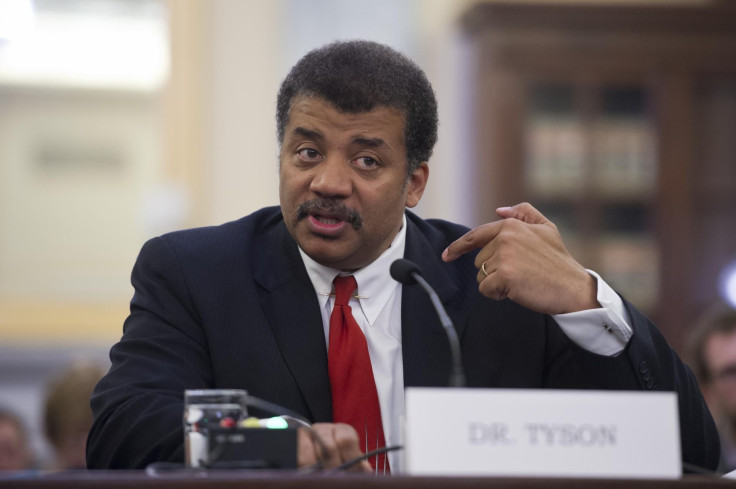10 Best Neil deGrasse Tyson Science Tweets

Neil deGrasse Tyson is known for his sense of humor and for not holding back on what he’s thinking. Science experts and novices alike can’t seem to get enough of him, so when simply seeing him speak on television or reading his remarks in a magazine are not enough to satisfy your appetite for NDT, the astrophysicist’s Twitter account is full of entertaining commentary about science, math and the state of humanity. Here are a few of his brightest gems, in no particular order.
An anti-joke none of us expected
If you remove a person's arteries, veins, & capillaries, and tie them end to end, that person will die.
— Neil deGrasse Tyson (@neiltyson) December 7, 2016
And in case you were wondering, the total length of our veins, arteries and capillaries is about 60,000 miles, according to Live Science. To truly understand how long that is, the distance around Earth at the equator is only about 25,000 miles.
Read: Neil deGrasse Tyson’s Favorite Ways to Die in Space
The insult against a popular holiday
To all on the Gregorian Calendar, Happy New Year! A day that's not astronomically significant...in any way…at all…whatsoever.
— Neil deGrasse Tyson (@neiltyson) January 1, 2017
All New Year’s Day really marks is that Earth has made a full revolution around the Sun since the previous New Year’s Day. Our planet also reaches its closest point to the Sun around this time, but not necessarily on Jan. 1 — this year it was three days after that holiday.
His thoughts on alien sex
If I ever met a Space Alien, I’d resist shaking its extended appendage, not knowing for sure the details of alien anatomy.
— Neil deGrasse Tyson (@neiltyson) April 15, 2016
Because let’s face it, if you say you haven’t thought about it, you’re lying. Unfortunately, if we are going to find extraterrestrials any time soon, it may only be a life form as simple as a microorganism. In that case there won’t be very much to shake, but we also won’t have to worry about sexual appendages — bacteria, for example, reproduce asexually, by simply splitting into two.
A dose of reality
In 5-billion yrs the Sun will expand & engulf our orbit as the charred ember that was once Earth vaporizes. Have a nice day.
— Neil deGrasse Tyson (@neiltyson) September 6, 2016
The Sun and the Earth are each about 4.5 billion years old already, and everybody has to die sometime. The larger the star, the shorter its lifespan, so the biggest ones out there — which are dozens of times larger than the Sun — only live for several million years. It’s possible that the smallest stars, at only a fraction of the size of ours, could live for trillions of years.
A glimpse of his inner child
Would be cool if just once, the National Anthem flyover-jets buzzed the stadium with a low-altitude Mach-2 sonic boom.
— Neil deGrasse Tyson (@neiltyson) February 5, 2017
A sonic boom is what you hear on the ground when an aircraft flies overhead faster than the speed of sound. It’s thunderous and results from the shock wave the vehicle creates by displacing air.
Putting things into perspective
if a football were the Sun at the 50-yard line, Earth would be at the 15-yard line. Pluto, a quarter-mile away. Get over it.
— Neil deGrasse Tyson (@neiltyson) February 6, 2017
And at the same time, hitting Pluto supporters with a harsh truth. Whether it’s a full-blown planet or not, it’s more than 2.5 billion miles away from us even when at its closest point to Earth.
Some words of inspiration
If one evening you feel sad enough to cry, look up. Your tears will not fall and the starry night may bring joy to your soul.
— Neil deGrasse Tyson (@neiltyson) March 5, 2017
It sounds a lot like the statement Neil Armstrong’s family released after the astronaut died in 2012: “For those who may ask what they can do to honor Neil, we have a simple request. Honor his example of service, accomplishment and modesty, and the next time you walk outside on a clear night and see the moon smiling down at you, think of Neil Armstrong and give him a wink.”
Laughing at your expense
If you wished upon that first Star you saw tonight in twilight, then it will not likely come true. You wished on planet Venus
— Neil deGrasse Tyson (@neiltyson) December 2, 2016
Venus is such a bright sight in the night sky because it’s the closest planet to Earth and reflects a lot of the light from the Sun that is cast upon it.
A reminder that the world doesn’t revolve around us
On Pluto, with its 248-year orbit around the Sun, birthdays are incompatible with human physiology.
— Neil deGrasse Tyson (@neiltyson) October 5, 2016
It takes about 165 years for Neptune to go around the Sun a single time, so those two bodies both have longer orbital periods than a human life. Life on Mercury would mean completing a revolution around the Sun about four times more often; on Venus about 1.6 times more often. Mars takes almost twice as long as Earth to go around the Sun. Jupiter has an orbital period of about 12 Earth years, Saturn about 30 years and Uranus more than 80 years.
His prediction for the future
Time to behave, so when Artificial Intelligence becomes our overlord, we've reduced the reasons for it to exterminate us all.
— Neil deGrasse Tyson (@neiltyson) February 23, 2017
Computers already know pretty much everything about us, so hopefully Tyson’s tweet will give you something to think about when you can’t sleep tonight.
See also:
Neil deGrasse Tyson Says We’re Closer to Finding Aliens on Mars
© Copyright IBTimes 2024. All rights reserved.





















